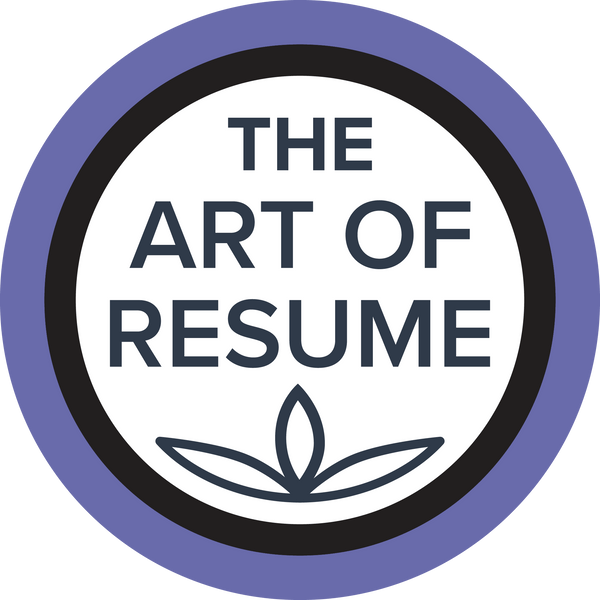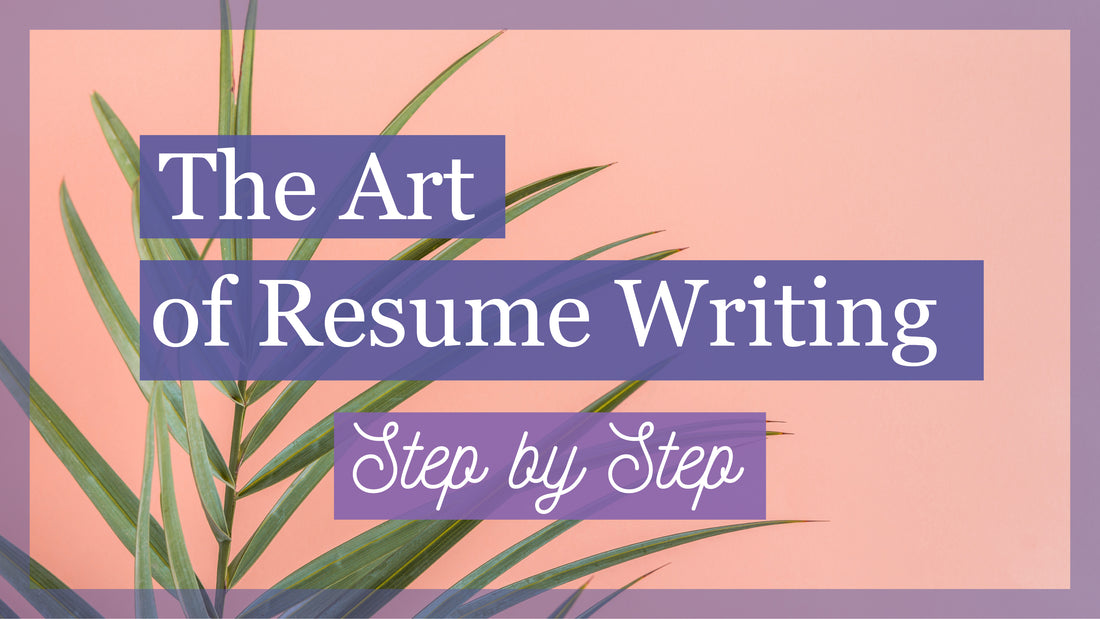The Art of Resume Writing: Get Noticed by Prospective Employers 2023
Looking for guidance on resume fundamentals?
This comprehensive resume writing guide will provide you with essential information on resume structure, design, and content. Discover what constitutes an effective resume and learn what key details should be included (as well as what to avoid) when crafting your own.
Presenting yourself in the best light is crucial. Your resume is a powerful tool to differentiate yourself from other candidates. It must impress. By creating a well-crafted resume, you can propel your future prospects, advance your career, and enhance your financial well-being.
Given these compelling reasons, investing effort into creating an outstanding resume is in your best interest.

Understand the fundamentals: What constitutes your resume?
It's quite simple. Your resume serves as your main marketing tool, an essential requirement in today's job market. It should be a concise and visually appealing representation of your true self. This document showcases your notable achievements, strongest attributes, employment history, skills, and educational background.
Crafting a compelling resume sets you apart from other candidates and demonstrates that you are the ideal choice for the job. The goal is to persuade the reader that you deserve an interview by presenting an exceptional resume.
While the primary purpose of your resume is to secure an interview, it also serves as a guide for the interviewer. Ensure that your resume is customized to the specific position you are applying for, aligning with the objectives of the company.
Your resume and cover letter define who you are and how you want to be perceived.
Right off the start, make sure you have a great resume design.Your resume should exude professionalism, capture attention, stand out as unique, and be effortlessly legible.
Looking for inspiration or unsure about how to create an appealing resume design? Our collection of resume templates simplifies the application process and guarantees swift notice of your qualifications.
RESUME TEMPLATE DOWNLOAD
Next, you will need to fill out each resume sections. Here are the most important sections of your resume:

Let’s break your resume down into each resume section:
1) Header: Your Name
Your name should be clear & stand out. Opt for a classic font that ensures clear visibility. Avoid using elaborate fonts that may pose challenges in reading.
2) Professional Profile | Professional Summary
Although not obligatory, this section provides the reader with a deeper understanding of your identity. In your resume summary, you can include the following details:
- Years of experience
- Pertinent credentials, training, and education
- Accomplishments directly aligned with the objectives of the position
- A noteworthy quality or characteristic that will contribute to the company's objectives
3) Professional Experience
Highlight your most recent work experience at the top of your resume and list your work history in reverse chronological order.
- Prioritize listing your accomplishments and achievements at the beginning, with your tasks and responsibilities towards the bottom.
- Quantify your achievements by including specific numbers, percentages, or other relevant metrics.
- Emphasize how you have contributed to the company's financial success or overall success.
- Select only the most significant accomplishments that directly relate to the job objectives.
- Ensure that each point is concise, direct, and error-free.

4) Professional Title
The job title is not mandatory, but it helps define who you are and the job position for which you are applying.
5) Contact Information
- Ensure that your resume includes your phone number, email address, city, and province/state.
- It's important to have your contact information on every page of your resume to ensure that it is easily accessible and not lost if printed.
- Avoid including unnecessary personal details such as complete address, sex, marital status, race, sexual orientation, social insurance number, immigration status, religious or social affiliations.
- If relevant to the job position, consider including your LinkedIn account, website, blog, or media site on your resume.
- Use a professional email address for communication purposes.
- While having a custom email server is ideal, a Gmail account is acceptable. However, avoid using Hotmail, AOL, Yahoo, as they are not considered professional and may negatively impact your application.
- It's crucial to maintain a professional handle for your email address. Consider using your first and last name as an obvious and professional handle.
EXAMPLE:
YES: yourname@yourprofession.com
NO: catlover98@yahoo.com
6) Education
- For recent graduates, prioritize your education by placing it at the beginning of your resume.
- Incorporate your educational background into the experience section, enabling you to elaborate on the knowledge and skills acquired during your studies.
- Unless your GPA is 3.5 or above, it is generally not necessary to include it on your resume. If your GPA meets this criterion, it may be relevant for the first 2-3 years following graduation.

7) Your Skills and Expertise
- List your hard skills & your soft skills.
- Hard skills: Any skill learned that has a teachable, measurable ability.
Example: Writing, understanding a computer program or specific equipment
- Soft Skills: Traits that make you a good employee. Example: Fast learner, teamwork, independent, professionalism.
- Try to stay away from descriptions like “very good at” or “amazing” or “strong”. Instead, show examples detailing why.
Example: Leadership, professionalism, teamwork, critical thinking
8) Computer Programs and Technical Experience
- Include all relevant computer programs
- Mac, PC, or other platforms
- Any word processing programs
- Your typing skills
- Database management
- Social media literacy, if applicable
- Make sure every skill listed is applicable to the job listing
7) More Section Options on Your Resume
- Languages
- Awards
- Professional Development
- References
- Training
- Volunteer
- Memberships
- Associations
- Licensing
- Certifications
- On-the-job-training
- Interests
- Internships
- About You
Note: Make sure that anything that you add to your resume shows a direct positive impact towards the objectives of the job position for which you are applying.

How to Highlight Your Accomplishments
Provide evidence that you will succeed in a new role. This is what a potential employer is looking for in your resume - you must prove that you are the best candidate for the job. Show them that you can be successful by showing your past successes.

What is an Accomplishment on Your Resume?
An accomplishment is something that you did well. It can be a solution you created, a contribution, or an action that you took. This accomplishment had a positive impact on the company, employers, or employees.
Identify your accomplishment and show positive outcomes.
Accomplishment Example:
By introducing new sales tactics, was able to increase sales production by 15%.
Quantify your resume statements. This will increase the effectiveness of your statements. By adding numbers like percentages, increases, profits, sizes, your resume will show your future employers your real value.
Quantifying Example:
Trained 200+ employees over 1.3 years - resulting in a 25% reduction in new hires - saving $15,200.
How to Create a Resume Accomplishment Statement
Articulating how you have accomplished something is simple with a STARS method:
S- Situation- What is the problem, challenge, obstacle to which you were confronted.
T- Task- What did you need to do to remedy the situation. What were the challenges?
A- Action- What did you do? Talk in detail about your involvement.
R- Results- What was the outcome or change that had a positive impact?
S- Skills- Describe your abilities and skills involved in having this accomplishment.
Another way to understand your resume accomplishment statement:
I accomplished “X”, related to “Y” by doing “X
Resume Accomplishment Statement Ideas
- Boosting profits or sales by cutting costs
- Being proactive in problem-solving
- Enhancing programs, products, or services
- Excelling in emergency or crisis management through critical thinking
- Achieving higher individual or team performance
- Strengthening client relations
- Earning awards or commendations
- Enhancing profit, quality, and reliability
- Saving time and money
- Setting performance records or receiving awards
NOTE: Always use strong resume action verbs. Here is a great list of verbs.
The most crucial sections of your resume are the accomplishment statements, which will not only make your resume stand out but also prove valuable during your interview. Place your top achievements prominently at the beginning of your resume to impress recruiters and potential employers, demonstrating that you are the ideal candidate for the job.

Proofreading Your Resume 101
Your resume will be thoroughly examined by Human Resources, so it's crucial to eliminate any mistakes. Spelling and grammar errors are particularly frowned upon and common. Follow these simple tips to ensure your resume is flawless:
- Utilize the spell check feature in your word processing program, ensuring that the language settings are correct for your country.
- Employ an online tool like Grammarly.com to check for grammar mistakes. It's free and user-friendly.
- Avoid relying solely on your word processor's spell check. Have both yourself and a reliable person manually review your resume.
- Take the time to carefully review your resume multiple times. Allow yourself 10-20 minutes between each reading to maintain a fresh perspective. Print a copy and review it.
- If you're a student or recent graduate, seek assistance from your school's career center or career counselors.
- Request a proofreading favor from a colleague, friend, or family member.
- Use a ruler to ensure proper alignment of all elements on your resume.
- Avoid using jargon or unfamiliar terms in your resume. Stick to language you understand.

Congratulations on completing your resume!
Take pride in your accomplishments. Crafting a resume is no small feat. It requires patience and dedication. Always strive to present yourself in the best possible light by ensuring that your resume is clear, concise, tailored to each job application, and free of any mistakes. These valuable tips will expedite your journey to securing job interviews.
Follow Us:






